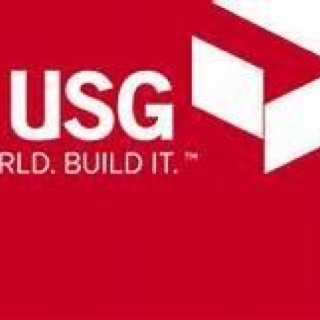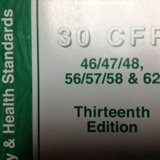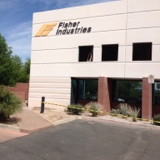Information
-
Document No.
-
Audit Title
-
Client / Site
-
Conducted on
-
Prepared by
-
Location
-
Personnel
Inspection Information
-
Procedure # :
-
Procedure Name:
-
Department:
-
Area:
-
Equipment Type:
-
Make:
-
Model:
-
Add signature
-
Equipment # :
-
Procedure Type:
- SAR
- PPM
- Operator(OPR)
- Rebuild(RBL)
-
Done as a Route
-
Category:
- Mech.
- Lube
- Elect
- Operator
-
JSA/VWI # :
-
Special Tools:
-
Frequency:
-
Frequency Base Date:
-
Other Frequency:
-
Frequency Base Date:
Instructions
-
Information:
-
1. The overall goal is to monitor and manage the level of the water beneath the surface, and we
accomplish this by measuring through the 4 pipes that have been drilled into the ground.
2. Additionally, the inspection of the areas in table 2 is to determine the overall stability of the ground,
and to proactively catch any movement in these areas. This is accomplished by physically visiting
each of these areas monthly, viewing them from the perspective of how it looked at the last
inspection, and documenting those observations. Take photos of each area as inspection is completed,
label each photo to the area inspected and store in P:\Mine Stability Inspection Photos\Monthly
Plant Inspections -
Visual Inspections:
Visually inspect all downspouts, storm drains, ditches, building foundations and roadways each month. Each April and October, a plant wide survey of these locations and the plant grounds overall should be taken, including photos for history purposes, and filed along with the SAR for mine stability.
New or unusual surface cracks:
Once the inspector is familiar with preexisting surface cracks in an area, monitoring for new cracks can help predict a possible subsidence event. When an inspector begins a monitoring routine, they should become very familiar with the area, so that the development of new surface cracks can be noticed as early as possible. Video and photo records are suggested. Occasionally, surfaces may fracture naturally, usually in a linear pattern. New cracks that are linear should not be ignored, however. Recording all new developments is important. Fractures that are more likely to lead to a subsidence event are usually radial or acute in nature. Arcuate cracks are those that begin to form circles. If a new radial or arcuate surface crack is discovered, a supervisor should be notified and very close monitoring of the area should follow.
Steam coming from surface cracks:
During winter months, when the surface temperature is much less than that of the underground mine temperature, steam may be seen coming up through surface cracks. This is very useful in locating surface cracks in a large area. For example, at the Fort Dodge plant, a very large area is monitored near Mill Road/Paragon Ave. During winter months, steam from more substantial surface fractures can be seen from the road, helping the inspector to find this area of concern. Most surface cracks will not allow steam to come through. Only cracks that are relatively deep and have little material between themselves and the mine will allow significant steam to rise. For this reason, these are areas of concern and should be monitored closely.
Noticeable expansion of existing cracks:
Once the inspector becomes familiar with existing surface cracks, routine monitoring of these cracks for expansion is important. Expansion of surface fractures is a signal that the ground is moving, and that a subsidence event is possible. Fluctuation in temperature may also cause expansion and contraction of surface cracks, but the change should still be recorded and monitored closely. If extreme or accelerating expansion of surface fractures is noted, a supervisor should be notified and very close
monitoring of the area should follow.
New or unusual ground depression:
Once the inspector is familiar with the original condition of the surface, monitoring for new ground depressions can help predict a possible subsidence event. Depressions in the ground are a signal that a sinkhole may exist under the depression and its surrounding area. As a depression deepens, surface failure becomes more likely and the development of a sinkhole may be imminent. If ground depression begins to accelerate, a supervisor should be notified of this condition and very close monitoring of
the area should follow.
Actual sinkhole recorded:
If the inspector notices a new sinkhole, a supervisor should be notified immediately. New sinkholes are naturally developing holes in the surface. These sinkholes may be less than a foot deep, or may travel to the depths of the underground mine, with varying width. A newly developed sinkhole will often show broken vegetation near the top of the hole, and fresh dirt down the sides. New sinkholes in cemented areas should be easy to notice, since all cemented areas should be inspected frequently. Once a supervisor is notified, photo and written documentation should be completed.
Any other unusual findings:
Other unusual findings such as cracking of walls or foundations, or leaning utility poles should be recorded as well. The inspector should have an idea of what the area should look like. If anything unusual is discovered during a visual inspection, it should be recorded. Something that appears to be nothing may turn into a subsidence event over time, so it is important that all findings are documented. Depending on the nature of the unusual finding, a supervisor may be notified. Keeping abreast of changing weather conditions can be useful to the inspector. Large changes in barometric pressure, temperature, and heavy rainfall can all lead to subsidence events, and the inspector should be aware of changing weather conditions. -
Inspection Date:
Water Level Wells
-
Water Level Wells:
Well Site
-
Location of Site:
-
Photo of Site:
-
Water Level (feet)
-
Other Pump Comments:
Ground Stability Checklist
Ground Stability Checklist:
-
1. Employee Parking Road - Employee Parking Lot Area
-
Add media
-
2. Mill Road - From UP rail line to intersection of paragon ave north and south
-
Add media
-
3. Paragon - From intersection of Mill road to 700 feet beyond plant entrance east and west
-
Add media
-
4. Plant Entrance - From entrance to up rail line north and south
-
Add media
-
5. Paper Warehouse - Northern building perimeter
-
Add media
-
6. Surge Warehouse - Building perimeter and interior
-
Add media
-
7. Board Plant (east side) - Building Perimeter
-
Add media
-
8. Board Plant (South side) - Building perimeter to mill road
-
Add media
-
9. Board Plant (East side) - Building perimeter to mill road and UP rail line
-
Add media
-
10. Mill (West Side) - Mill west side near bunkers
-
Add media
-
11. CNIC Rail Line South - starting 1000' east of CNIC bridge and ending 2000' east of bridge north and south
-
Add media
-
12. 210th street - Intersection of paragon to Gypsum Creek
-
Add media
-
13. Ready Mix - East Side by well
-
Add media
-
14. Decker Haul Road - East of Haul road by trees
-
Add media
-
15. Main plant Parking lot - 10' north pump hose
-
Add media
-
16. Decline - South side of plant between New Haul Road and UP line
-
Add media
-
17. South Old Block - middle of building on south side formation
-
Add media
-
18. North Wells #5 - North, South, and east banks of reclaimed area
-
Add media
-
19. East of 210th and Paragon - sinkhole 200' east of Paragon, northwest of plant, under gravel road inside fence
-
Add media
-
20 . Office Parking Lot - sinkhole along fence perimeter North of Lot
-
Add media
-
21. Six Track - South west corner of building
-
Add media
-
22. East of old marshaling yard by brush pile - directly east of old marshaling yard by the yard crew brush pile
-
Add media
-
23. Rail Line south of board - South of the board line, north of the mill road. The rail line that runs into the board
-
Add media
-
24. East of New Haul Road - 30' east of new haul road and 150' south of the plant
-
Add media
-
25. Southwest of board plant 100 yards - NNW of backfill machinery storage 75 yards
-
Add media
-
26. East of Paragon 50 yards northwest of the plant - south of tracks 20 yards
-
Add media
-
27. Center beam rail line for board plant - north of mill road, south of board plant
-
Add media
-
28. North of main shop - west of pallet storage
-
Add media
-
30. South of lagoons and West of power lines - follow main power line from mill road to 5th power pole and proceed 40' northwest of pole
-
Add media
-
31. West side of old marshaling yard - 60' west of fence Line on west side of old marshaling yard across from roadway
-
Add media
-
32. South of mill east of USG rail - 25' south of second power pole south of mill substation. South of sized rock pile
-
Add media
-
33. Hole south of mill, west side of RR tracks, about 200' south of sewage lift station
-
Add media
-
34. Hole north of main office - west of east plant driveway
-
Add media
-
35. Hole south of mill - east of temporary oil storage building
-
Add media
-
36. Hole south of mill - in line with transformer sub-station
-
Add media
-
37. Hole on Northwest corner of storeroom
-
Add media
-
38. Hole north of Mineral City - East of front sign in grass area
-
Add media
-
39. Depression in Decker Parking Lot
-
Add media
-
40. Hole west of RR track - north of switch, west of board
-
Add media
-
41. South wall of hydrocal finish, bag room
-
Add media
-
42. Hole beside storm drain - north of storeroom entrance
-
Add media
-
44. Hole south of Decker Office - East of Paragon
-
Add media
-
45. Hole on west side of storeroom
-
Add media
-
46. Hole along Paragon - south of RR tracks, North of entrance
-
Add media
-
47. Hole west of truck scale - in area of RM open top dumpster
-
Add media
-
48. Hole in track - south of board, beside hole #27
-
Add media
-
49. Along Duncome Haul Road South of ATV Park
-
Add media
-
Additional Inspection Sites
Stability Site
-
Add media
Signature
-
Date Inspected:
-
Inspected By:













